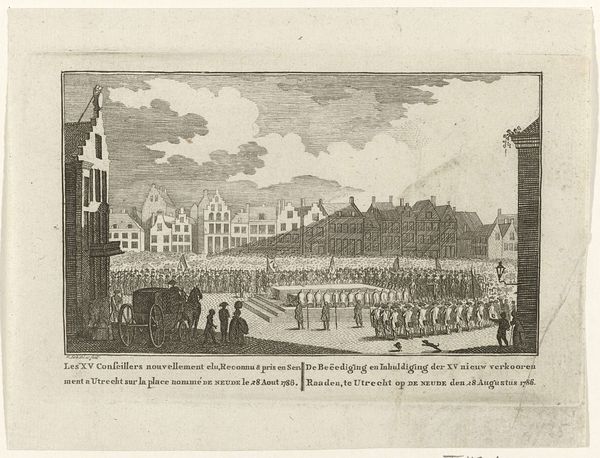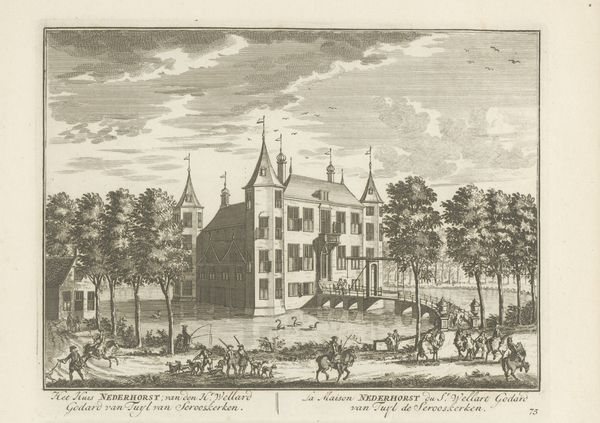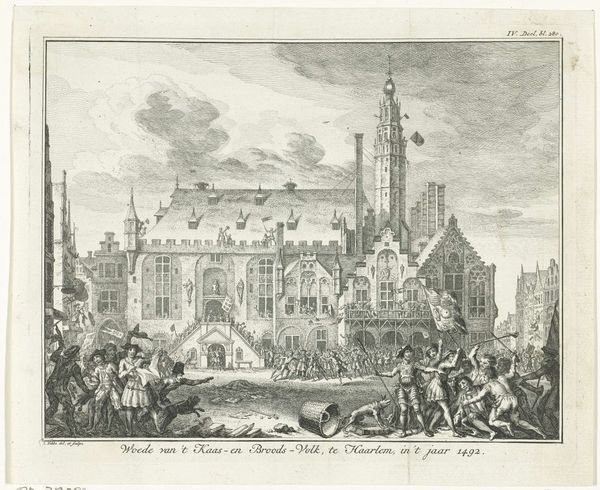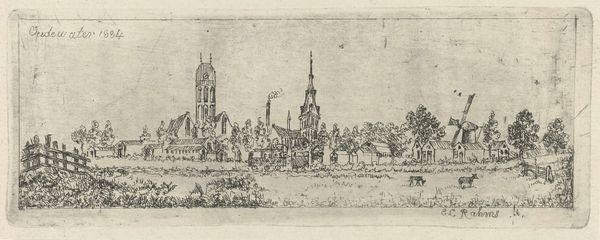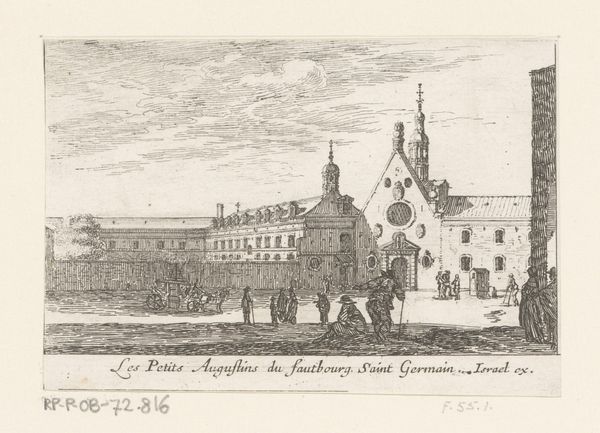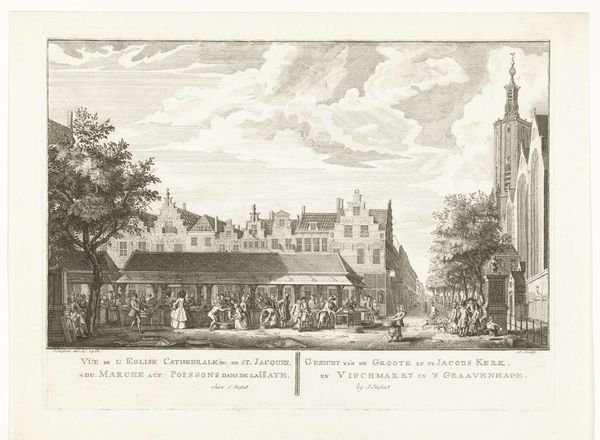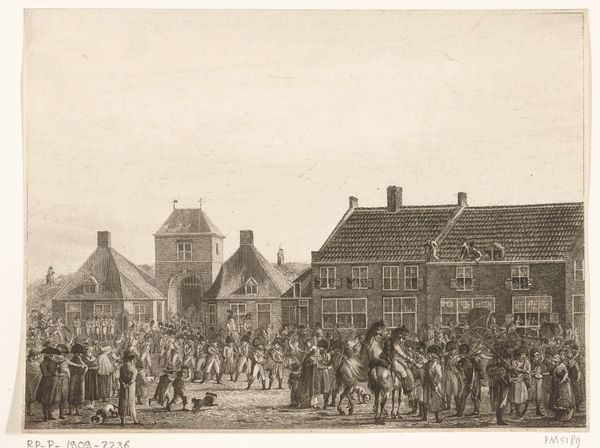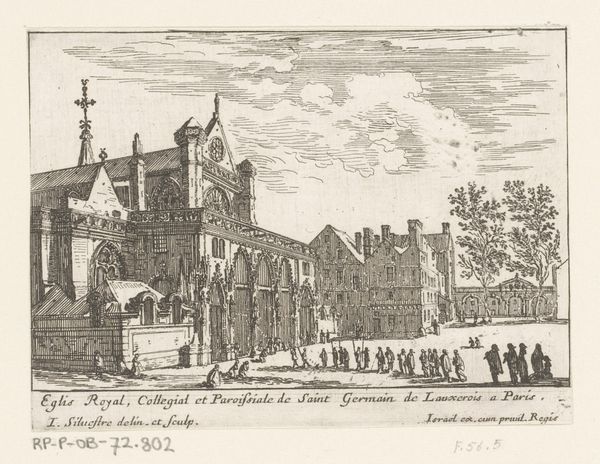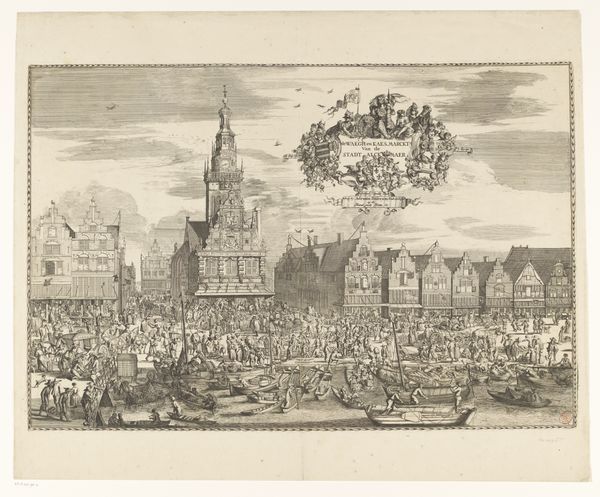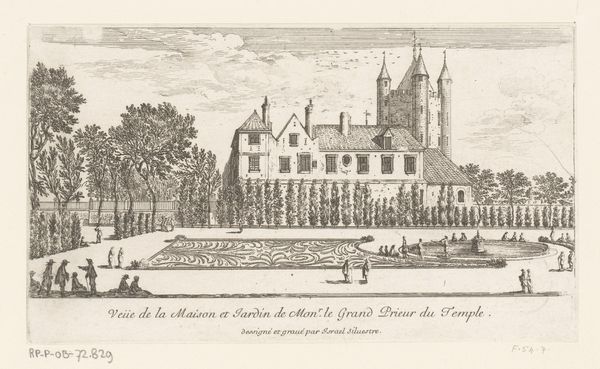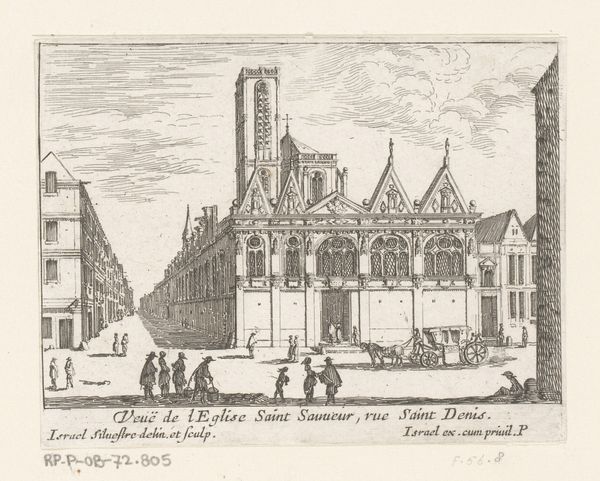
Haagse schutterij in de lijkstoet van Anna van Hannover te Delft, 1759 1759 - 1761
0:00
0:00
drawing, print, pen, engraving
#
drawing
#
baroque
# print
#
pen illustration
#
old engraving style
#
landscape
#
pen
#
cityscape
#
genre-painting
#
engraving
Dimensions: height 194 mm, width 395 mm
Copyright: Rijks Museum: Open Domain
Curator: What strikes me first is the airiness of this cityscape; the people feel almost incidental to the buildings, mere silhouettes against the imposing architecture. Editor: It's a cityscape alright, but it's so much more than that. We’re looking at a drawing and engraving by Simon Fokke, created between 1759 and 1761. The full title is, “The Hague militia in the funeral procession of Anna of Hanover in Delft, 1759.” It uses pen and ink to capture a very specific moment in time and the performance of state power. Curator: Performance is a great word for it. Everyone seems to be keeping a respectable distance, arranged in lines like meticulously placed chess pieces. Grief, at least in this rendering, is awfully… orderly. Does it feel authentic to you? I find myself wondering what Anna of Hanover might have made of such rigid displays of mourning. Editor: I don’t know if authenticity is the right question here. We are, after all, dealing with a commissioned piece, created during a period when displays of power and control were everything. It reflects 18th-century notions of civic duty and the relationship between the monarchy, the military, and the city. Note the architecture towering above, the figures rendered as small within it— it amplifies this sense of immutable order. Curator: The city really does seem to loom. Are the stoic townspeople aware they're practically footnotes in the face of this grandeur? This pen illustration is a document, but I would describe it as almost dreamlike—especially how Fokke has used those fine lines. A somber but interesting take on landscape meets genre painting meets… political theater? Editor: Absolutely, and we can also interpret that dreaminess through the lens of history and the colonial echoes rippling across the narrative, reminding us that power dynamics were embedded in these so-called genre scenes and landscapes of the baroque period. Consider how many historical accounts have been intentionally obscured by the very hands wielding power. Curator: I hadn’t thought about that aspect, but now, those ghostly figures feel like more than just pen strokes on paper; they carry untold stories. I see an ordinary day turned extraordinary, molded into art and preserved within the walls of the Rijksmuseum. It's a strange mixture of mourning, memory, and even, perhaps, a veiled unease with the whole production. Editor: Precisely. What seemed like a simple landscape harbors a universe of hidden narratives waiting to be decoded, a testament to how art serves not just to reflect, but also to interrogate, and remember the complex dynamics of power.
Comments
No comments
Be the first to comment and join the conversation on the ultimate creative platform.
